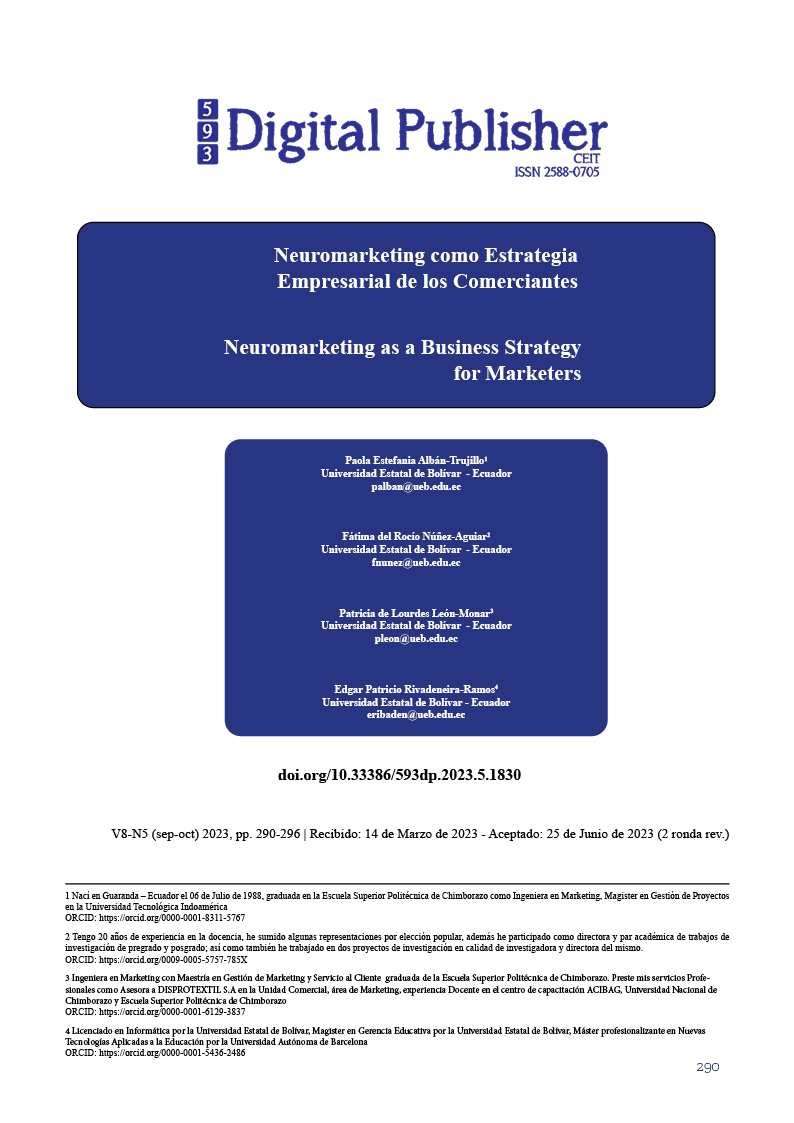Neuromarketing as a Business Strategy for Marketers.
Main Article Content
Abstract
Neuromarketing is a business strategy that uses knowledge from neuroscience and psychology to understand and leverage consumers' emotional and cognitive responses to marketing stimuli. By analyzing brain activity and measuring variables such as attention, emotion, and memory, companies can design more effective and persuasive strategies, personalizing their messages and adapting them to consumers' preferences, interests, and memories. While neuromarketing has enthusiastic supporters, there are also concerns about its practical applicability and ethical implications, such as its potential perception as manipulative and its limited accessibility for resource-constrained companies. In conclusion, neuromarketing provides a valuable opportunity to enhance marketing strategies, but its practical and ethical aspects must be carefully considered.
Downloads
Article Details

This work is licensed under a Creative Commons Attribution-NonCommercial-ShareAlike 4.0 International License.
1. Derechos de autor
Las obras que se publican en 593 Digital Publisher CEIT están sujetas a los siguientes términos:
1.1. 593 Digital Publisher CEIT, conserva los derechos patrimoniales (copyright) de las obras publicadas, favorece y permite la reutilización de las mismas bajo la licencia Licencia Creative Commons 4.0 de Reconocimiento-NoComercial-CompartirIgual 4.0, por lo cual se pueden copiar, usar, difundir, transmitir y exponer públicamente, siempre que:
1.1.a. Se cite la autoría y fuente original de su publicación (revista, editorial, URL).
1.1.b. No se usen para fines comerciales u onerosos.
1.1.c. Se mencione la existencia y especificaciones de esta licencia de uso.
References
Armstrong, G., & Kotler, P. (2017). Marketing: An introduction. Pearson.
Ariely, D. (2008). Predictably irrational: The hidden forces that shape our decisions. New York, NY: HarperCollins.
Berns, G. S. (2013). Neuromarketing: The Hope and Hype of Neuroimaging in Business. MIT Press.
Bargas-Avilés, N., Hernández-López, J. R., & Hernández-Mendoza, R. J. (2018). Neuromarketing and consumer neuroscience: Contributions to marketing research and practice. International Journal of Psychological Research, 11(2), 1-9. doi: 10.21500/20112084.3324
Boksem, M. A., & Smidts, A. (2015). Brain responses to movie trailers predict individual preferences for movies and their population-wide commercial success. Journal of Marketing Research, 52(4), 482-492.
Camacho, D., Andrade, E. B., & Maia, N. (2020). Neuromarketing: The Intersection of Neuroscience, Marketing and Ethics. Frontiers in Neuroscience, 14, 233.
Cui, Y., Zhao, D., Zhang, S., & Ma, Q. (2019). Neuromarketing research: Review and implications for marketing practitioners. Journal of Business Research, 101, 42-58. doi: 10.1016/j.jbusres.2019.03.025
De Araujo, I. E., Rolls, E. T., & Velazco, M. I. (2005). Marginal effect of branding on human neural food processing: A functional magnetic resonance imaging study. Neuroscience, 124(3), 695-703.
Dimofte, C. V., Yalch, R. F., & Zaharia, I. (2010). Consumer response to (dis) congruent brand names: Neuroanalytic evidence from an fMRI study. Journal of Consumer Psychology, 20(3), 299-308.
Dooley, R., & Gountas, J. (2012). Neurophysiological measures of advertising: A review. Journal of Advertising, 41(2), 17-31.
Fleming, M., & Kressel, L. (2015). Neuromarketing: Understanding the Buy Buttons in Your Customer's Brain. Routledge.
Genco, S., Pohlmann, A., & Steidl, P. (2010). Neuroimaging Techniques in Marketing Research: Principles and Applications. Journal of Marketing Research, 47(4), 579-594.
Gemar, M. C., & Moulton, S. T. (2013). Neuromarketing: The Next Step in Market Research? Psychology & Marketing, 30(11), 937-952.
Huettel, S. A., Song, A. W., & McCarthy, G. (2009). Functional Magnetic Resonance Imaging (2nd ed.). Sinauer Associates.
Lee, N., Broderick, A. J., & Chamberlain, L. (2007). What is 'neuromarketing'? A discussion and agenda for future research. International Journal of Psychophysiology, 63(2), 199-204. doi: 10.1016/j.





